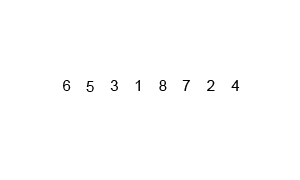- Divide: Break the given problem into subproblems of the same type
- Conquer: Recursively solve these problems
- Combine: Appropriately combine the results
-
Binary Search is a searching algorithm.
- Main algorithmic functionality: insertion, searching, deletion.
- Node-based binary tree data structure where each node has a key value.
- One node is designated the root of the tree.
- Each internal node contains a key and has two subtrees.
- The leaves (final nodes) of the tree contain no key. Leaves are commonly represented by a special leaf or nil symbol, a NULL pointer, etc.
- Each subtree is itself a binary search tree.
- The left subtree of a node contains only nodes with keys strictly less than the node's key.
- The right subtree of a node contains only nodes with keys strictly greater than the node's key.
- Interactive Visualization
search_recursive(key, node) // call initially with node = root if node is Null or node.key equals key return node else if key < node.key return search_recursive(key, node.left) else return search_recursive(key, node.right) -
Quicksort is a sorting algorithm.
- The steps are:
- Pick an element, called a pivot, from the array.
- Reorder the array so that all elements with values less than the pivot come before the pivot, while all elements with values greater than the pivot come after it (equal values can go either way). After this partitioning, the pivot is in its final position. This is called the partition operation.
- Recursively apply the above steps to the sub-array of elements with smaller values and separately to the sub-array of elements with greater values.
quicksort(A) if A has fewer than 2 elements return A else Pick a pivot p from A L ← quicksort(Things in A ≤ p) U ← quicksort(Things in A > p) Return L + [p] + U- When implemented well, it can be about two or three times faster than its main competitors, merge sort and heapsort
- Hungarian Dance
- The steps are:
-
Merge sort is a sorting algorithm.
- The steps are:
- Hungarian Dance
Create a merge sort algorithm that also removes duplicates.

